The Employment Situation in November
By Chair Cecilia Rouse
Today’s jobs report shows that the economy added 210,000 jobs in November, for an average monthly gain of 378,000 over the past three months. The number of jobs added in November came in below market expectations. Job gains in September and October were revised up by a combined 82,000.
In addition, the unemployment rate fell by 0.4 percentage point to 4.2 percent as labor force participation rose and the employment rate reached a new pandemic recovery high. This is the lowest the unemployment rate has been since the pandemic began. Wages rose by 0.3 percent over the month, for an increase of 4.8 percent year-over-year. Wage growth has been relatively rapid in recent months as employers try to hire as the economy recovers.
It is important to focus on the trend of data across multiple months, because data can be volatile.
- Job growth over the last three months has averaged 378,000, a solid pace.
Job growth from September to November averaged 378,000 jobs per month (see Figure 1). Since monthly numbers can be volatile, it is important to focus on the three-month average rather than the data in a single month, as described in a recent CEA blog.
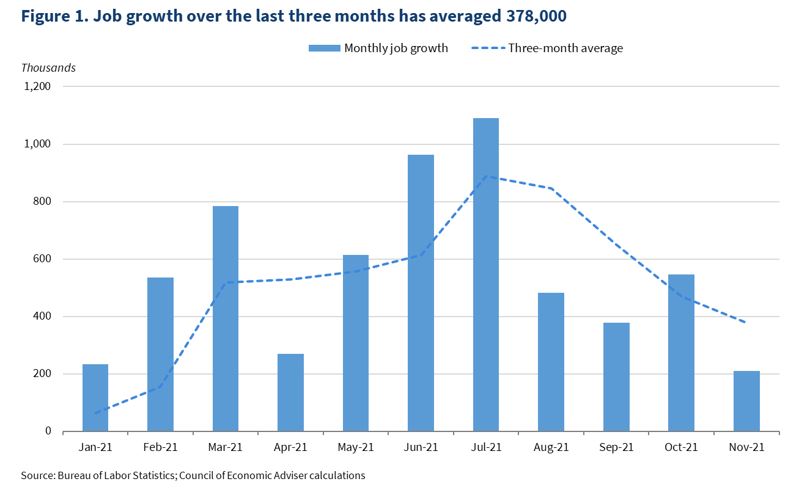
Nevertheless, the labor market has not fully recovered: employment remains about 3.9 million jobs (2.6 percent) below the pre-pandemic level.
2. The unemployment rate fell dramatically to its lowest rate in the pandemic
The unemployment rate fell by 0.4 percentage point to 4.2 percent, the lowest rate since the pandemic began. This recovery has been unusual in how rapidly the unemployment rate declined relative to recent recessions (as seen in Figure 2). For instance, the unemployment rate after the 2001 recession peaked at 6.3 percent in June 2003, and 19 months later, the unemployment rate had declined by 1.04 percentage point, a 16.5 percent decline. Since the pandemic unemployment rate topped off at 14.8 percent in April 2020, had it declined at a similar post-June 2003 pace, it would have only been 2.4 percentage points lower, instead declining by 10.6 percentage points.
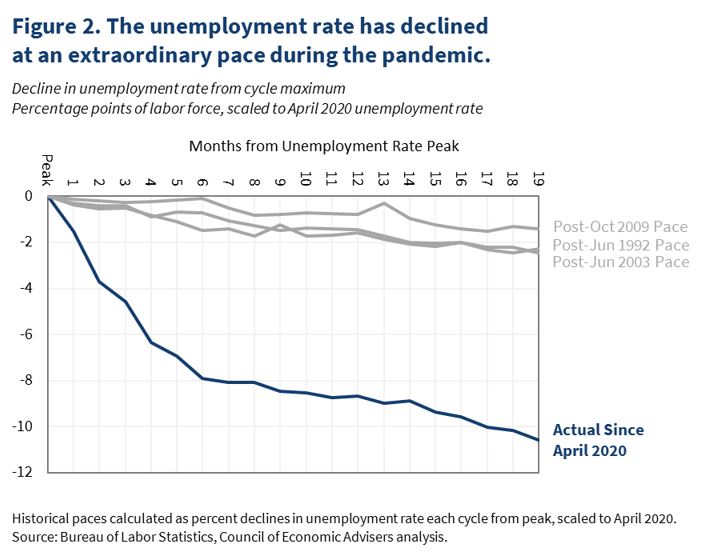
The unemployment rate fell for all racial and ethnic groups reported by the Bureau of Labor Statistics. It fell fastest for Black and Hispanic/Latino workers (although the Black participation rate also fell). However, the Black unemployment rate remains substantially higher than it is for other demographic groups at 6.7 percent.
3. The employment-population ratio rose to a new pandemic high, as employment increased for both men and women.
The percent of people who were employed rose by 0.4 percentage point to 59.2 percent. It rose by 0.4 percentage point for both adult men and women. This is a fast pace: prior to the pandemic, there hadn’t been a month with an increase this rapid since 1984.
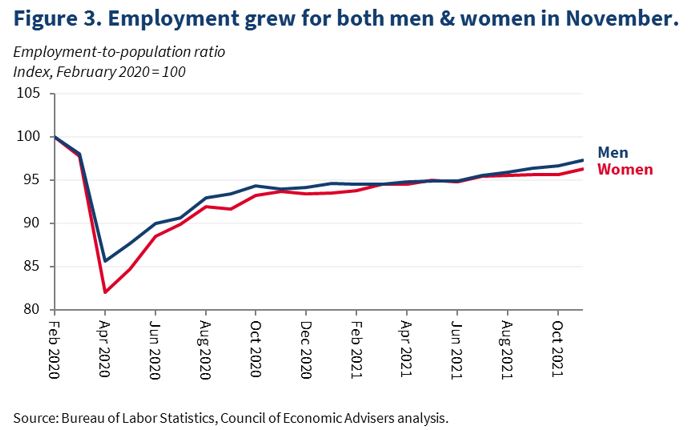
Indexing the employment-population ratio to the February 2020 level (as seen in Figure 3), the employment-population ratio is 3 percent lower than its pre-pandemic rate for men, while it is 4 percent lower for women, reflecting that the increased care responsibilities and particular industry mix of this recession has hit women harder than it has men. The gap between the decline in the employment rate for men and women had closed this spring and summer, but has reopened slightly in recent months.
4. The labor force participation rate also rose, both overall and for prime-age workers.
The labor force participation rate ticked up to 61.8 percent, the highest it has been during the pandemic recovery, in part reflecting increases in participation among workers age 25 to 54 (“prime-age workers”), as seen in Figure 4. It is important to look at the “prime-age” labor force participation rate because it is less impacted by the natural slowdown in labor force participation caused by the aging of the population and retirements.
The prime-age labor force participation rate has grown by a relatively-strong 0.9 percentage points over the past 12 months.
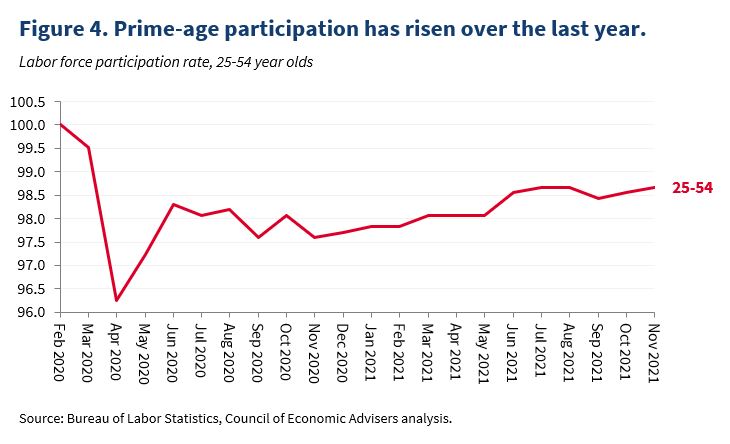
The fastest increase this month occurred among workers 16 to 24, while it was flat for older workers.
5. Slower job growth this month largely reflected slower growth in leisure and hospitality
The deceleration in job growth in November was largely driven by leisure and hospitality, as seen in Figure 5. In the three months prior to November, leisure and hospitality had added an average of 116,000 jobs, but it added only 23,000 jobs in November. The slower growth in November likely reflects slower than expected holiday hiring in retail trade, which lost jobs in November.
Government lost jobs for the fourth month in a row. Government hiring has been impacted by seasonal difficulties in recent months, as hiring, particularly in state and local education, has looked different than it has in past years.
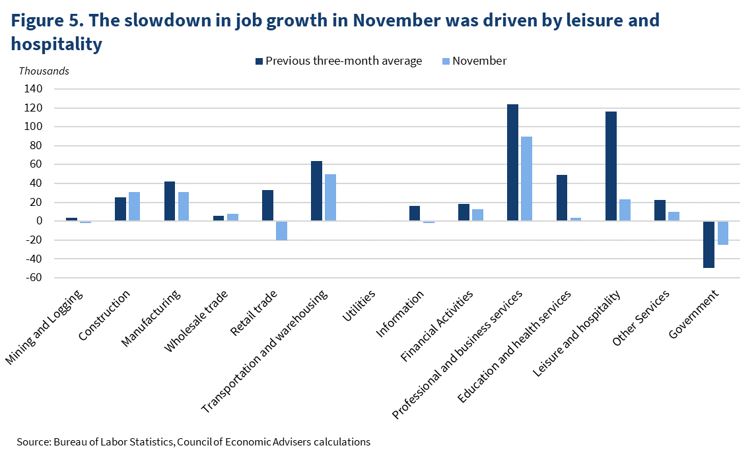
As the Administration stresses every month, the monthly employment and unemployment figures can be volatile, and payroll employment estimates can be subject to substantial revision. Therefore, it is important not to read too much into any one monthly report, and it is informative to consider each report in the context of other data as they become available.

